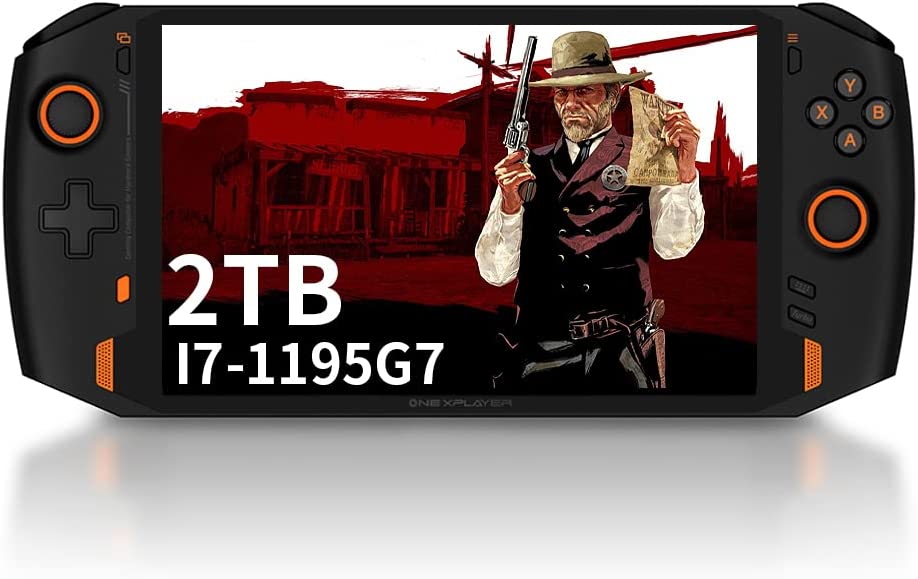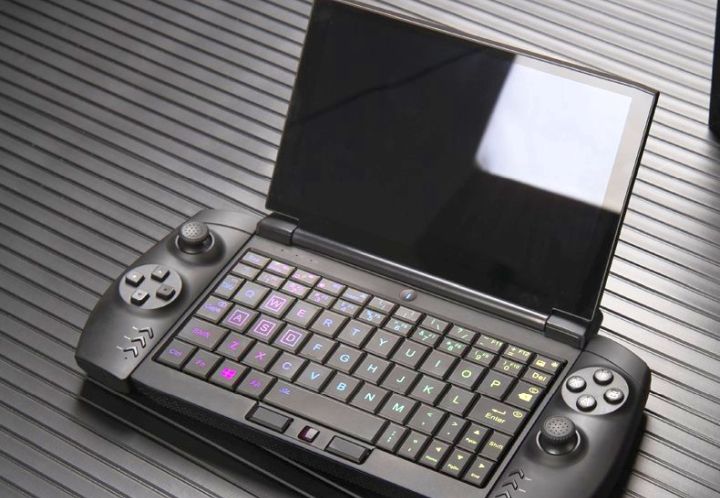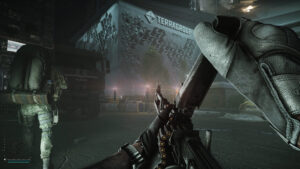
While PC gaming is more popular than ever, the handheld PC gaming market has been growing slowly over the years. There’s a certain appeal to having full-fledged PC games playable on the go, especially when traveling. What are some of the best choices available? Take a look at five of the best PC gaming handhelds that you can buy right now.
GPD Win 3
LANRUO’s GPD Win 3 was one of the more highly anticipated handheld PCs last year. It packs an Intel Core i7-1165G7 quad-core CPU with a base frequency of 2.8 GHz and a max turbo frequency up to 4.7 GHz while an Intel Iris Xe GPU handles the graphics. The 5.5-inch touch display has a 1280×720 resolution and 400 nits of brightness. There’s also 16 GB LPDDR4x RAM at 4266 MHz and a 1 TB NVMe 3.0 SSD.
Along with two analog sticks, shoulder buttons, triggers, analog pad and face buttons, the GPD Win 3 also sports a small QWERTY keyboard that slides out from behind. On top of being backlit, it also offers vibration feedback. The total package weighs 1.21 pounds and has a 45.62Wh capacity battery.
Performance-wise, NotebookCheck benchmarked the same configuration with a slightly weaker Core i7-1135G7. At 768p resolution and Medium settings, it achieved an average of 55.6 FPS in The Witcher 3: Wild Hunt, 60.9 FPS in Grand Theft Auto 5 (with 4x anisotropic filtering) and 64.2 FPS in Dota 2 Reborn. So overall, you can expect slightly better scores with the i7-1165G7.
At $1209.99, the GPD Win 3 is on the costly side. In terms of handheld PC performance, it’s reliable but the battery life can be low in heavier games, averaging 1.5 to 2 hours of playtime.
OneXPlayer 1S
The OneXPlayer 1S by XAMMUE looks stylish with its black finish and orange highlights but also offers a variety of configurations. The 1 GB model costs $1,379.99 and comes with an Intel Core i7-1195G7 with a base frequency of 2.9 GHz and max turbo frequency up to GHz. Along with an Intel Xe GPU, it offers 16GB LPDDR4x RAM at 4266 MHz, a 1 TB NVMe 3.0 SSD, and a 15300 mAh capacity battery. The display is 8.4 inches with a 2560×1600 resolution and touch support.
At 819 grams (with a kickstand, in case you want to give your hands a rest and play with a controller), the OnexPlayer 1S packs a lot of power. In Grand Theft Auto 5, it delivers 30 to 35 FPS in Very High settings at 1080p resolution. The battery life is roughly 4 hours based on the type of game.
Overall, you won’t be playing the latest triple-A titles at 1600p on the go but the OneXPlayer 1S is still a good handheld PC that should run them well at 720p and Medium settings.
Aya Neo Next
Instead of an Intel CPU, the Aya Neo Next features an octa-core AMD Ryzen 5800U clocked at 1.9 GHz with a boost clock speed of 4.4 GHz. Its GPU is an integrated Radeon Vega 8 along with 16 GB DDR4X RAM at 4266 MHz and a 1 TB NVMe SSD. The 7-inch touch display has a 1280×800 resolution. The 47 Whr battery provides about two to six hours of gaming, depending on the title.
It sounds good overall but costs $1,315 so you have to decide if the extra performance (which will also vary for each title) and battery life are worth it. Of course, if you’re also using this as a potential desktop replacement, then it’s not too bad though a docking station is required. So how does it work out in terms of performance? On Low settings, it averages 93 FPS in Gears Tactics, 54 FPS in Forza Horizon 5 (which hits 43 FPS on Medium), 36 FPS in Red Dead Redemption 2 and 48 FPS in Fallout 4. This is according to IGN’s review of the Advance configuration, which features the same specs but with 2 TB of space.
The Aya Neo Next isn’t perfect and is a tougher sell than the OneXPlayer 1S, GPD Win 3 or even the Steam Deck. It’s still a decent alternative, especially for those who don’t care about price.
OneGX1 Pro
The OneGx 1 Pro is marketed as a “PC mini laptop” instead of a handheld PC. Which sounds like the same thing but the former feels like more a laptop replacement than a full-fledged gaming handheld. Nevertheless, it has an Intel Core i7-1160G7, an Iris Xe GPU, and 16 GB LPDDR4X with a 4266 Hz frequency. It also includes a 512 GB NVMe SSD and 12,000 mAh battery.
The display measures 7 inches with a 1920×1200 resolution and touch support. Compared to the GPD Win 3, the mini-keyboard is a prominent feature, positioned just below the display. It includes two analog sticks, face buttons, and a D-pad but no triggers or bumpers. The analog sticks are like Joy-Cons which can be detached from the main unit.
According to ETA Prime on YouTube, it averaged above 55 FPS on Normal settings and 720p in Grand Theft Auto 5; above 70 FPS in Overwatch on Medium settings and 720p; and around 65 FPS on Forza Horizon 4 at 720p on Low settings.
Steam Deck
Of course, if it’s available, then the Steam Deck should be your first option. It has an AMD Zen 2 APU running at 2.4 to 3.5 GHz, an RDNA 2 GPU running at 1-1.6 GHz, and 16 GB LPDDR5 RAM. Storage varies based on the price – 64 GGB eMMC for $399, 256 GB NVMe SSD for $529 and a high-speed 512 GB NVMe SSD for $649. Each one comes with a high-speed microSD slot for further storage.
The display is a 7-inch, 1280×800 resolution screen with 400 nits of brightness and touch support. The battery is 40Wh, which provides 2-8 hours of gameplay depending on the game. Along with the usual face buttons, D-pad, analog triggers and bumpers, and analog sticks with capacitive touch, it also has HD haptics.
Performance-wise, at 1280×800 resolution with the highest preset for each title, you’re looking at 42 FPS for Borderlands 3, and only 14 FPS for Metro Exodus. Nevertheless, it outperformed a budget laptop like the MSI Prestige 14 Evo and even the Acer Nitro 5 with some titles. It’s also worth noting that several games have been specifically optimized for the Steam Deck so even if they’re not running at crazy settings, performance is still pretty stable. By comparison, the performance of titles on other handheld PCs will always vary.
All in all, if a handheld PC for gaming is your goal, then the Steam Deck provides good performance and excellent value for money. Plus, it’s only 669 grams, making it highly portable.


















